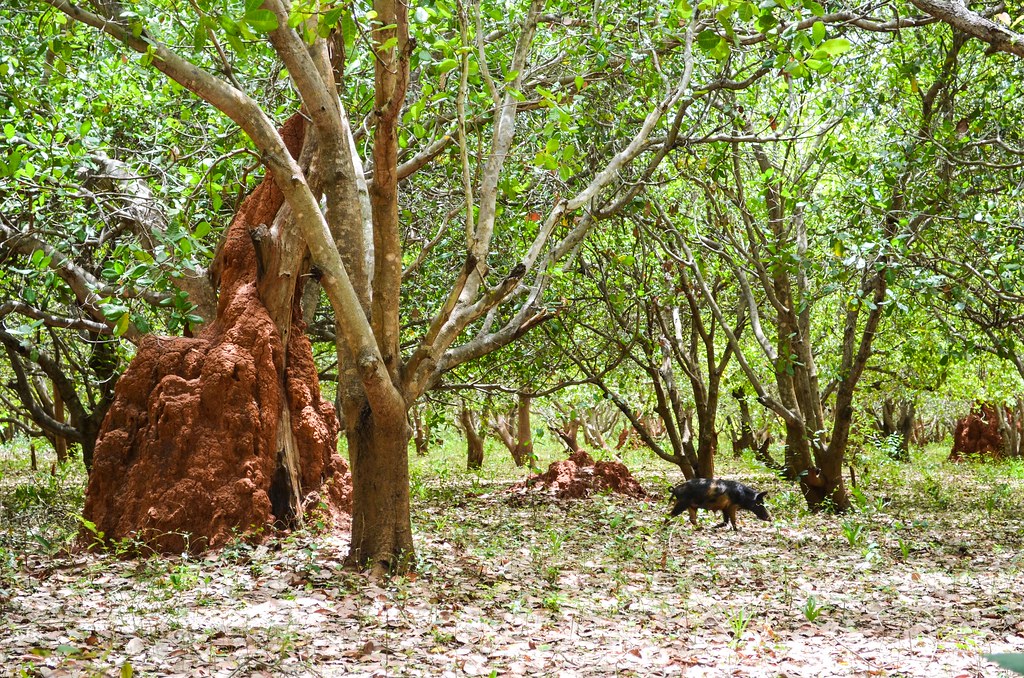I dug a little deeper into the visitor logs after I finished celebrating Twelve Mile Circle’s millionth visitor. Years ago I used to highlight the initial visitor from each nation. However, I stopped that after I’d attracted people to the site from just about everywhere. Nonetheless, there were a few stubborn holdouts and the logs didn’t lie.
Guinea-Bissau clung tenaciously to that list. Perhaps that shouldn’t be a surprise. This impoverished West African nation had only 1.6 million citizens. Additionally, English wasn’t even among its several official languages. Why should I reasonably expect someone from Guinea-Bissau to read about obscure US township names or some such nonsense? But I held out hope anyway. I figured that maybe a search engine might funnel a visitor my way if I posted a little information about the country. It’s worked before.
Background
The name Guinea appeared frequently along Africa’s Atlantic coastline and I explored its etymology previously in Upstart Eclipses Namesake. It was an old word probably picked up from an indigenous language. Europeans likely modified it to identify Africans living south of the Senegal River. The source still remained murky.
Several colonial powers — England, France, Spain, Portugal — used the term in a couple of ways. First, it designated specific West African geographic areas within their spheres of influence. Alternately it distinguished things that came from those areas.
Then independent nations emerged there in the second half of the 20th Century. Of course at that time they needed to modify their names to avoid confusion. This resulted in Guinea (formerly French Guinea), Equatorial Guinea (formerly under the control of several colonial powers, primarily Spain) and Guinea-Bissau (formerly Portuguese Guinea). The newly-formed government appended Bissau to the designation when it gained independence in 1973. Bissau was simply the name of the capital city of the former Portuguese colony.
Portuguese Dominance
Explorers from Portugal arrived along Africa’s Atlantic coast in the 15th Century in search of trade and wealth. They set up strongholds in what would later become Guinea-Bissau as well as other places. However the Portuguese remained along the coastline and never push farther inland. Instead they constructed fortifications at Cacheu and Bissau. From there they set up camp and traded with those who already occupied the continent.
It was a gruesome, brutal commerce based on slavery. Cacheu served as the principal port at that time. From there, thousands of people from Upper Guinea shipped out for distant lands and perpetual bondage. The remains of the fortress at Cacheu still existed along the waterfront to memorialize that somber point of embarkation (map).
Independence

Guinea-Bissau struggled mightily to win its freedom, one of the last African nations to cross that threshold. A dockworker strike at the Port of Bissau, Porto Pidjiguiti, (map) led to the massacre of more than fifty strikers when police opened fire in 1959. It sparked a protracted armed resistance that dragged on for another fifteen years.
Independence brought little peace, however. No president has managed to complete a full five year term since the nation’s inception, beset by coups d’état, assassination and a civil war. The 1998/99 civil war forced the United States embassy to suspended its operations and leave. The US still doesn’t have a diplomatic presence in Guinea-Bissau, represented instead by its embassy in neighboring Senegal.
The last couple of years have been relatively quite and tourists actually do visit Bissau although in small numbers.
“In comparison to many other African cities, Bissau is a quiet capital. The city lacks the chaotic hustle and bustle of other capitals, offering a refreshing atmosphere that helps visitors relax and recharge. The pace of life is slow, and you will find more locals spending the evenings chatting on their porches than in any nightclubs or bars. There are also few traditional tourist sights in the city, but Bissau is constantly growing and evolving.”
Oh Nuts!

A single agricultural product represented the overwhelming predominance of Bissau-Guinean exports. This required a huge asterisk however since it referenced legal products. The nation also relied upon a substantial underground economy based on illicit drug smuggling and trafficking. Extreme poverty and rampant corruption combined with a favorable seacoast with remote islands made Guinea-Bissau a perfect transit point for South American cocaine bound for Europe.
Setting that aside, cashews served as its main commodity, a whopping 80% of lawful exports. Small companies such as Procajú hoped to promote the nation’s economy so it could “escape its poverty through its own efforts, not by relying on foreign aid.”
“Most (90%) of the cashews exported are grown and collected by some 37,000 small, rural farmers and their families rather than large ‘commercial’ growers… Until 1995, cashews were exported raw and processed in India, cutting out the value added by local processing. However, under the auspices of USAID’s Trade and Investment Promotion Support (TIPS) project, cashew processing has become a small but growing industry. Local processing — roasting, drying, shelling, and packaging cashews for export — can quadruple producer’s earnings.”
Cashew cultivation grew steadily, making Guinea-Bissau “the world’s fifth-largest cashew exporter behind India, Vietnam, Ivory Coast and Brazil… employ[ing] some 80 percent of the workforce in this country.” It became significant enough to make Bissau the recent site of the African Cashew Alliance’s annual World Cashew Festival & Expo in September 2016, as reported in Cashew Industry News.
I knew next to nothing about Guinea-Bissau before researching this post. Hopefully someone from a “.gw” Internet domain will be equally interested in exploring Twelve Mile Circle.

Leave a Reply